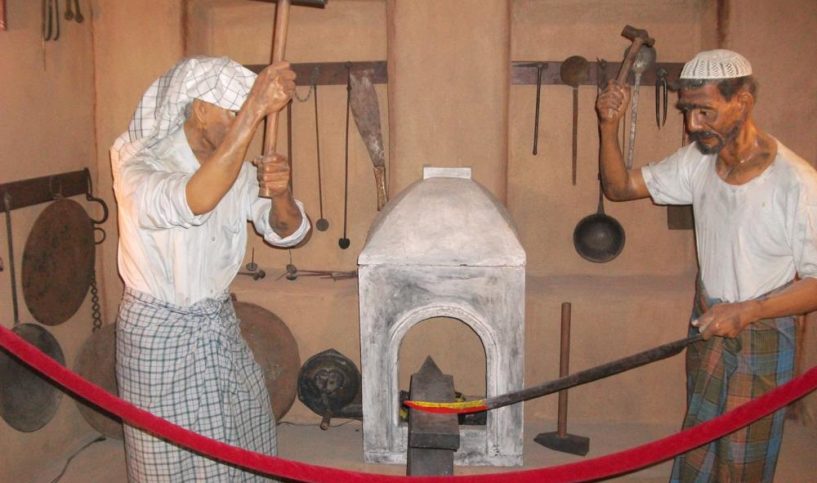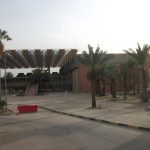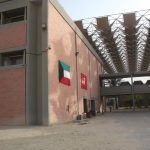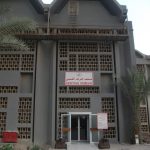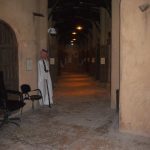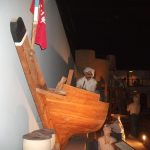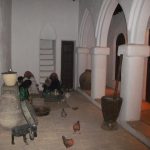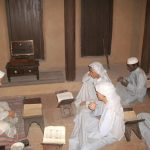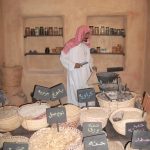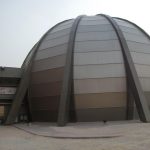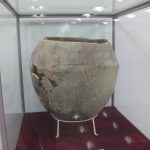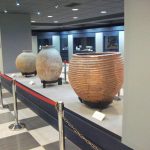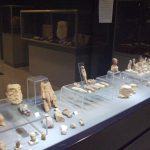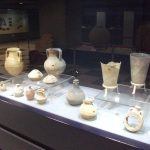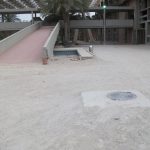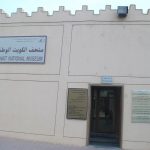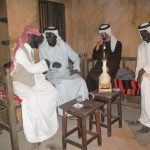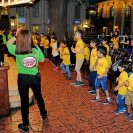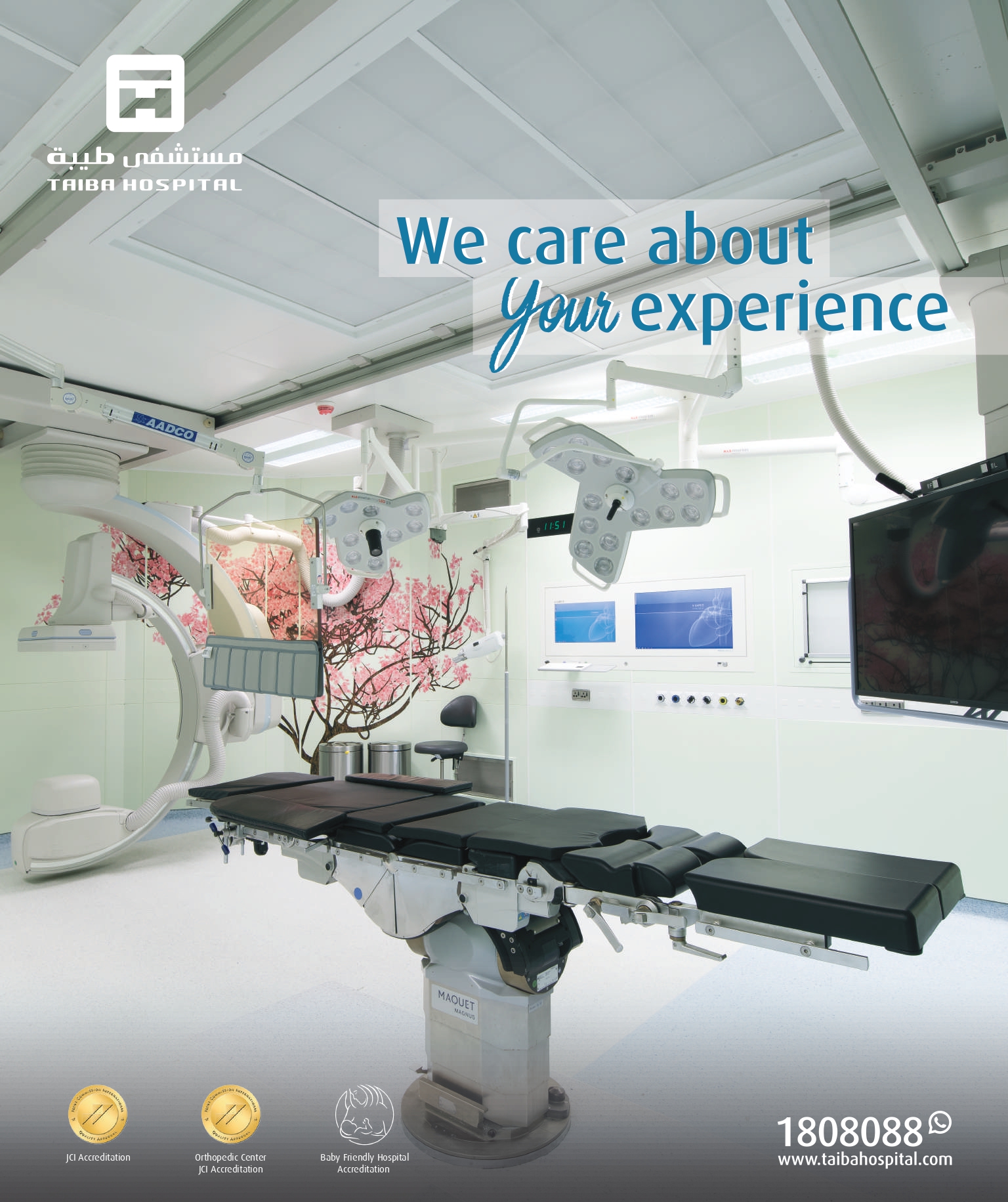by Christopher Charles Hockey
My peculiar, yet fascinating, experiences at the Kuwait Museum of National Memorial (bazaar May 2012) served only to bolster my desire to learn about Kuwait’s national identity. Surely, I thought, the obvious place to head next was the country’s national museum. The museum’s title alone suggested it would be a fountain spewing out information that could help me in my search. It is, after all, part of a national museum’s duty to preserve and present an image of the country’s identity.
However, on entering through the main gates I was immediately worried. The place was deserted, dirty and falling apart. Pathways were covered with piles of soil, there were no signs and no explanation of where to go (the man at the gate had been particularly unhelpful in this regard). The compound looked more like a building site than an open museum. I eventually found my way into the archaeological exhibits. Here there were some very impressive archaeological artifacts found on Failaka Island. Failaka was an important site from as early as the Bronze Age and was colonized by the Ancient Greeks in the fourth century BC. The archaeological remains found on the island should be celebrated by Kuwait and are a key part of Kuwait’s earliest heritage. The artifacts in the exhibition include Bronze Age cauldrons, Hellenistic coins and even a small sculpture of Alexander the Great. These are stunning objects that are worth viewing but there is little explanation within the displays. Archaeologists often say that an object without context is meaningless and this is all too obvious in this gallery. There is only one information board and whilst most artifacts are labeled, there is no suggestion of their significance or when they date to. Some labels are translated into English but not all. Moreover the pamphlet I picked up was written in almost incomprehensible English. The exhibition dealt me more questions than answers.
I left the archaeological exhibition impressed with the artifacts but not feeling like I had learned anything. I walked back outside through the rubble and into the heritage section. This is an absolutely brilliant life-size reconstruction of a street in “Old Kuwait”. A series of rooms depict a shoemaker’s, a goldsmith’s, a herbalist, a bakery, a weaver’s store, a Bisht shop, and a gun-maker amongst many other retail and service outlets. There is also a representation of a traditional Kuwaiti house (along with a courtyard, kitchen and dining room) and a full-scale model of a ship building yard. All this is done tastefully and with great attention to detail. The idea is that the visitor is able to walk through “Old Kuwait” and gain an appreciation of how things have changed and an understanding of Kuwait’s “heritage”. However, the display is outdated and it does not look like any work has been done on it since its original construction. The booklet I was given was produced in 2003. The display has no concept of time and very little suggestion of when this street might have existed (the booklet did not help). This is further complicated when, wondering along the street, you suddenly stumble across displays of late nineteenth and early twentieth century British colonial artifacts: old guns, stereo systems and early cameras. Although interesting in their own right, there is no narrative to elucidate why these things are on display here and they appear incongruous with the rest of the exhibition; indeed they detract from it. The heritage section is impressive and is worth a visit but it could easily be so much better.
Leaving the heritage section I began to realize that this museum had a lot of potential but I still did not feel that I had learned anything. Next I was told to go to the “Planetarium”. This was surreal. The contrast between the rubble outside and the high tech equipment and displays inside was striking. Downstairs there were truly educational displays, teaching all about the science of space. Above this, the Planetarium itself shows interesting educational films (involving two strange cartoon characters) about the nature of our milky way to visitors sitting in extremely comfortable seats. This Planetarium is a really useful resource centre but, again, there are issues. None of the interactive computers were working and the whole place appears a little run down. As with the rest of the museum, there is little to engage the visitor.
As I was leaving I noticed that a huge ‘boom’ sits behind one of the largest empty buildings. This ship (Al-Muhalab) epitomizes the museum’s approach to preservation and customer experience. It is beginning to fall apart and, again, there are no information boards to explain what it is doing there or where it is from. I am sure it could potentially attract many visitors wanting to learn about traditional Kuwaiti shipping but at the moment it is simply another under-utilized resource.
Conclusion
Whilst there are many interesting artifacts and good ideas at the National Museum of Kuwait, it not only fails to provide basic customer services (a proper reception, information point, guides, signs) but it plays no role in uniting the country or promoting national identity; it does not send a clear message; and it fundamentally fails to educate the visitor. The museum has almost everything it needs to be a gem, protecting and promoting Kuwait’s national heritage. There are impressive artifacts and well-created displays. However as it stands it failed to help me in my quest to learn about Kuwaiti National identity. Clearly the country’s early archaeology and pre-colonial traditions are both important aspects of the nation’s past but the museum does not explain why this is the case. National museums in other parts of the Middle East, especially the one in Bahrain, and in much poorer countries have managed to attract a stream of visitors to well organized and highly educational facilities. Why is the Kuwait National Museum not doing the same? Perhaps it is in a phase of rebuilding and restructuring (many buildings currently stand empty with bricks sitting inside). If this is the case, and I hope it is, then this fact should be made clear to visitors. Perhaps the museum should even be shut down completely until new displays are completed. I understand the museum was destroyed in the Iraqi invasion 20 years ago but one would expect repair work to have been completed by now. At the present time, the museum appears disorganized, neglected and devoid of purpose.
It would not take that much effort or money to sort the museum out. I have a few suggestions. The whole site could be tidied and cleaned; flowers could be planted to make the exterior more attractive; signs could be installed in order to direct visitors; up-to-date brochures and pamphlets (with good translations) could be published; the museum could be advertised; and most importantly, clear information boards (with consistent translations) could be produced to educate and guide the viewer. Until these things are done the museum will continue to fall short of its duties as a national protector of Kuwaiti heritage.
The museum is located in Kuwait City, not far from the Grand Mosque and next to the National Library. Following the Gulf Road (25th Street) heading West, take the first left after Al Ma’arri Street. The main gate to the museum is on your right.

